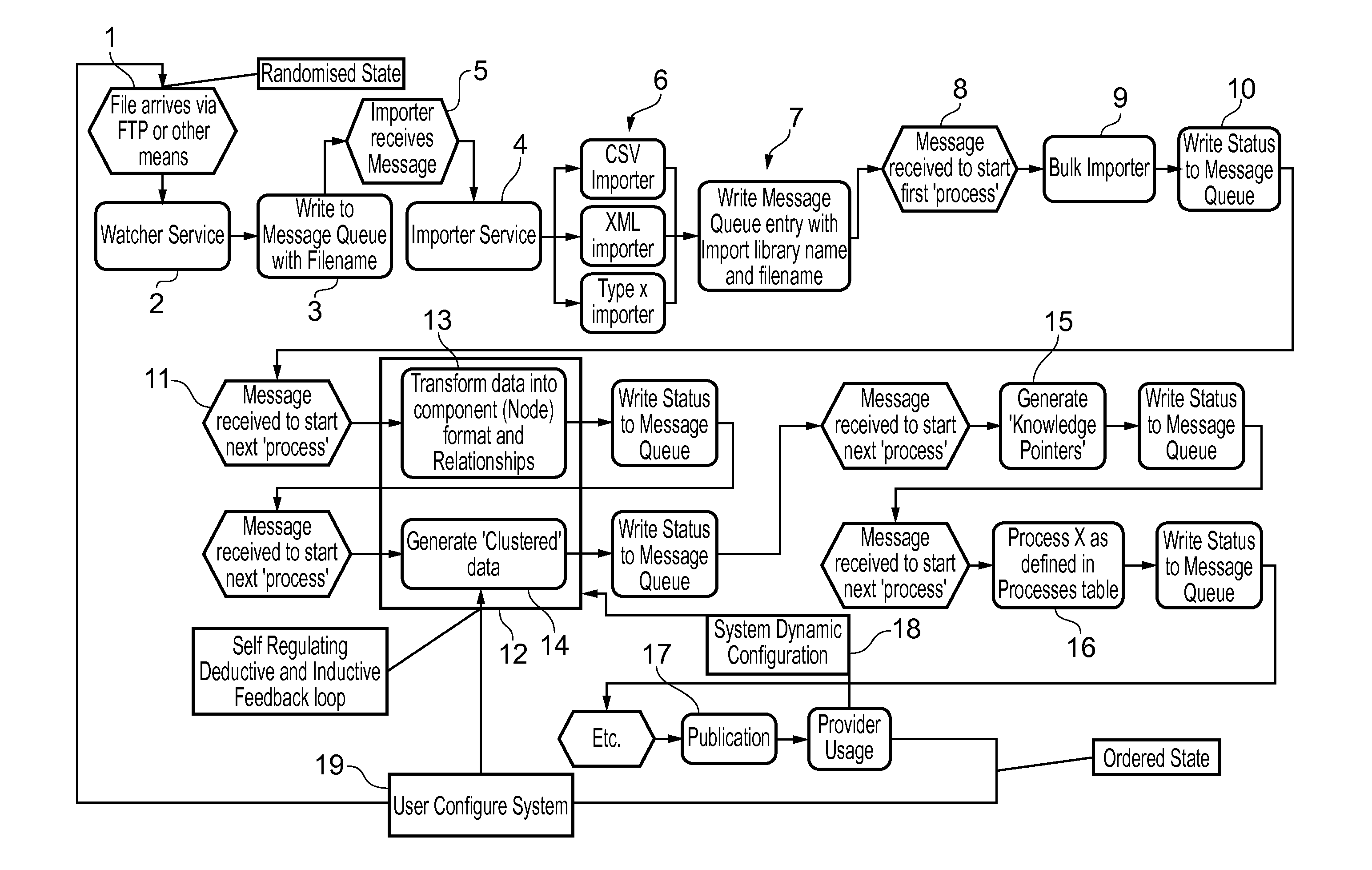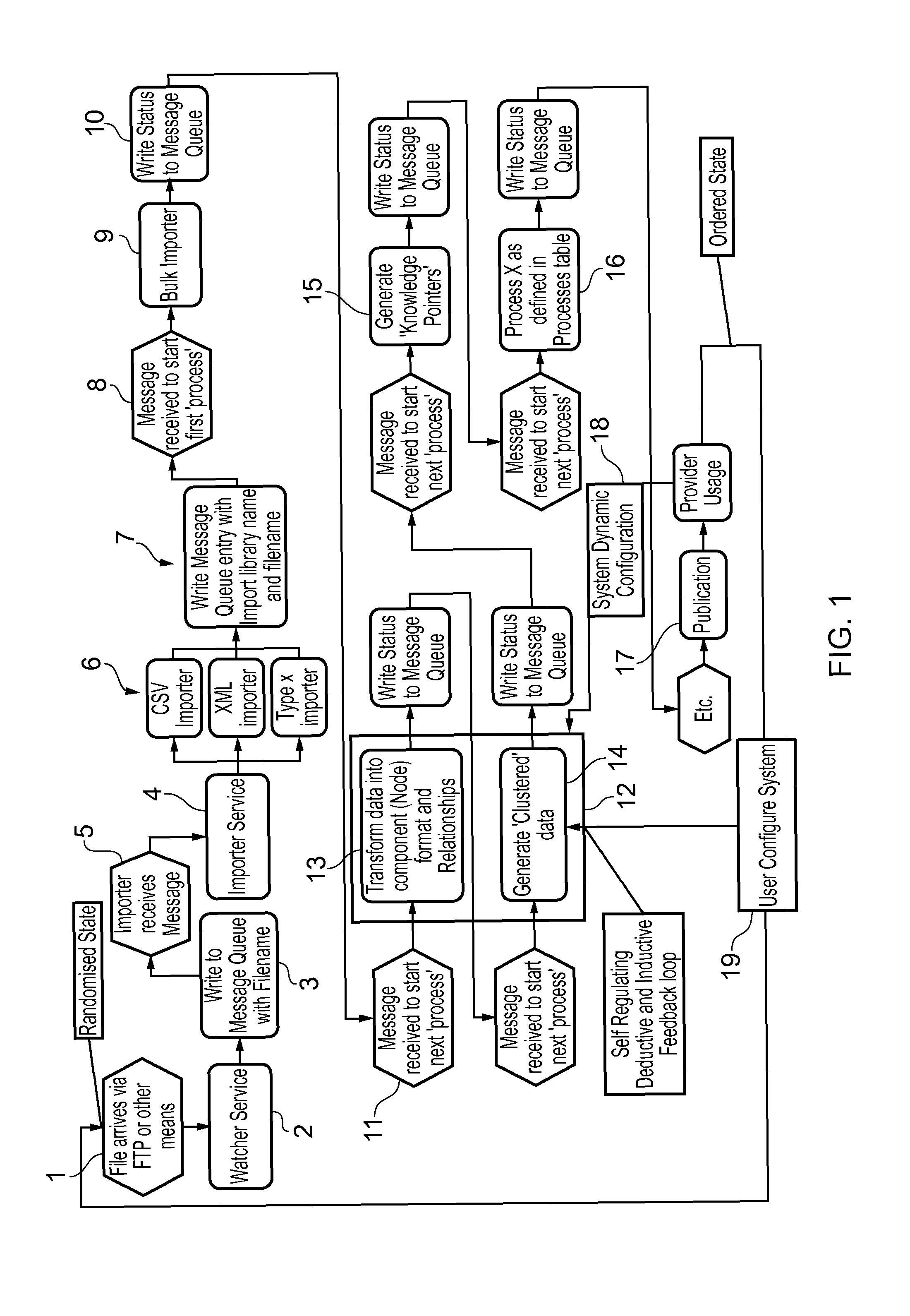Information processor arrangement
a technology of information processors and arrangements, applied in the field of information processor arrangements, can solve the problems of difficult to be certain that a high proportion of such activities will be detected, investigatory resources and those involved in generating business intelligence, exercising due diligence and risk management, and focusing too much on one area or too many, so as to achieve the effect of effective us
- Summary
- Abstract
- Description
- Claims
- Application Information
AI Technical Summary
Benefits of technology
Problems solved by technology
Method used
Image
Examples
Embodiment Construction
[0147]FIG. 1 illustrates a typical information processor arrangement in the form of processor steps in order to provide information in an appropriate form for analysis. The technique for analysing the information in order to identify irregular links is generally as outlined above, thus an information dataset 1 arrives at watching service 2 in an as presented state. This watching service 2 provides a name to the information dataset at processor stage 3 so that an importer service 4 appropriately receives that dataset for analysis via a communication link 5. The database is then analysed for typical identifier legends in a process stage 6 such that the subsequent analysis can be appropriately entered in a queue and given a library name / file name within the processor arrangement at stage 7. Subsequently at stage 8 the dataset is retrieved from the library in order to start the process 8 to transfer the data into an appropriate bulk importer collator at stage 9 and indicate status in a ...
PUM
 Login to View More
Login to View More Abstract
Description
Claims
Application Information
 Login to View More
Login to View More - R&D
- Intellectual Property
- Life Sciences
- Materials
- Tech Scout
- Unparalleled Data Quality
- Higher Quality Content
- 60% Fewer Hallucinations
Browse by: Latest US Patents, China's latest patents, Technical Efficacy Thesaurus, Application Domain, Technology Topic, Popular Technical Reports.
© 2025 PatSnap. All rights reserved.Legal|Privacy policy|Modern Slavery Act Transparency Statement|Sitemap|About US| Contact US: help@patsnap.com


